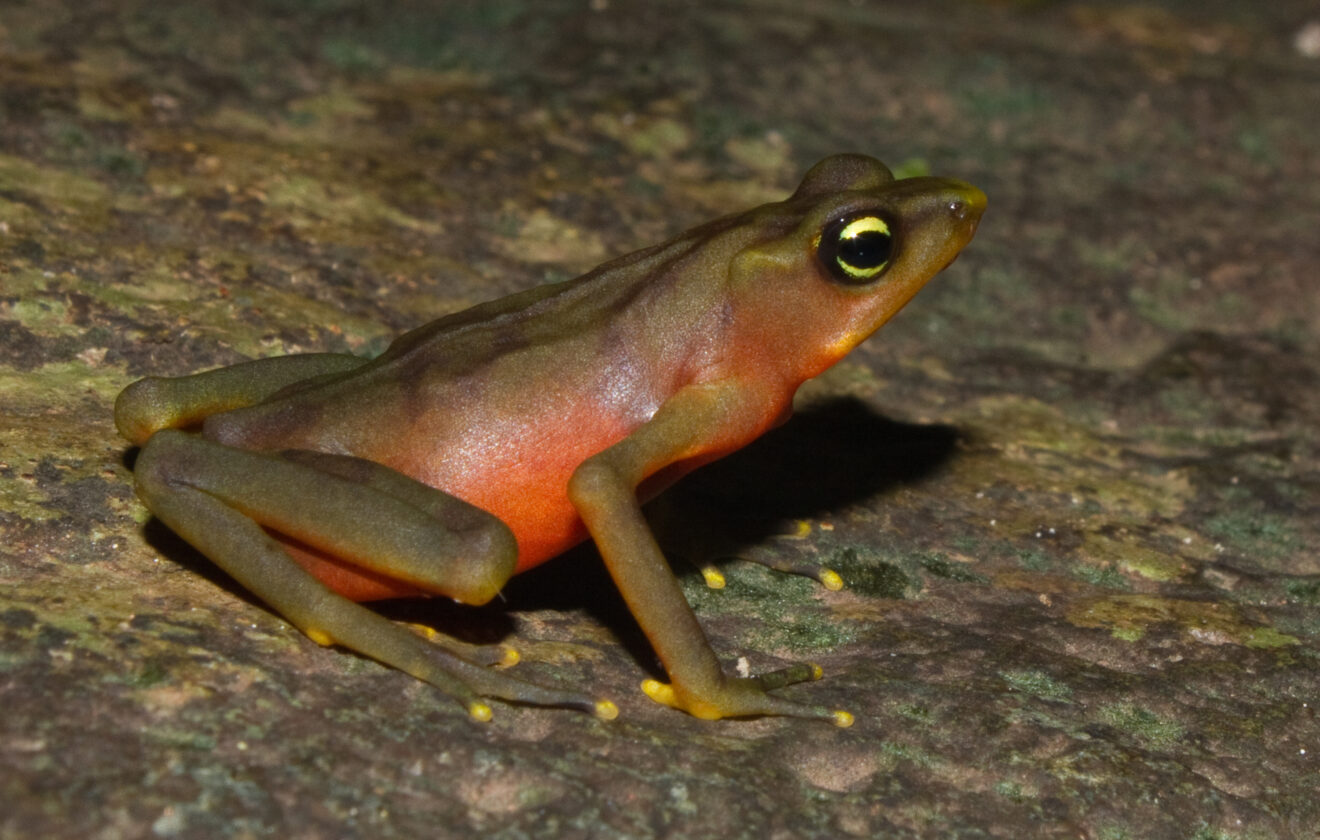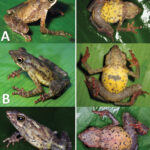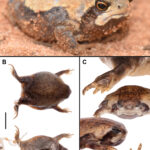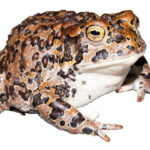Atelopus limosus: Secrets of Panama’s Harlequin Jewels#
Hidden deep within Panama’s lush tropical rainforests and meandering mountain streams, lives a vibrant yet elusive frog known as Atelopus limosus, commonly called the Limosa harlequin frog. With mesmerizing colors ranging from rich golden yellows to deep velvety blacks, this small amphibian stands out as nature’s painted jewel. In recent decades, however, its shimmering beauty has become emblematic not only of vibrant ecological diversity but also of profound vulnerability.
The delicate fate of Atelopus limosus has captivated biologists, conservationists, and nature enthusiasts alike, placing it prominently within passionate conversations about biodiversity and amphibian declines. But to truly understand the plight—and potential hopeful story—of this frog, we must journey deep into its intriguing natural world.
Taxonomy and Classification#
The Limosa harlequin frog, scientifically designated as Atelopus limosus, belongs to the amphibian order Anura, characterized by tailless frogs and toads. In specific taxonomic terms, Atelopus limosus finds its home within the Bufonidae family—a diverse family shared with familiar toads. More precisely, this captivating species resides within the genus Atelopus, a group widely renowned for their vivid coloration and dramatic patterns, earning them the common epithet “harlequin frogs.”
The name “limosus” itself carries significance. Derived from Latin, it translates roughly to “muddy,” an intriguing allusion perhaps to its original description or initial discovery within muddy or streamside territories. Close relatives, including many other harlequin frogs, share a similar tale of striking visuals intertwined with challenging conservation narratives.
Natural Habitat#
At home within Panama’s richly biodiverse landscape, Atelopus limosus primarily dwells along pristine rivers and streams in tropical lowland and montane forests. Its geographic distribution largely spans eastern Panama, focusing especially in regions like the Darien province and near the Chagres National Park, known globally as a biodiversity hotspot.
An Environment Crafted by Water and Shade#
Imagine stepping into a humid forest, so dense the sunlight filters gently through thick layers of broad-leaved canopies, dappling leaf-littered forest floors sprinkled with mossy boulders and delicate ferns. Each step takes you deeper into a landscape alive with sounds—the constant murmur of streams, the distant drumbeat of rain showers, and the symphony of countless creatures. It is precisely here, amidst shaded banks and cool, crystalline streams, that the Limosa harlequin frog finds its sanctuary.
This choice of habitat is crucial; these mercurial waters provide ideal breeding grounds while cool temperatures and consistent humidity sustain their sensitive skin. Ecological niches such as these function as natural refugia, carefully balancing temperature, moisture, and available prey necessary for survival—and ideal for a species susceptible to environmental fluctuations.
Physical Characteristics#
Glancing at a Limosa harlequin frog, one immediately notes its remarkable hues and patterns. Adult individuals commonly measure around 2.5 to 4 centimeters in length. Their slender yet sturdy bodies bear vividly contrasting colors, with intricate patterns of black, yellow, orange, or even bright green on their limbs and dorsum.
Built for Beauty and Survival#
The striking coloration of Atelopus limosus is not merely aesthetic; it serves vital survival purposes. Like many tropical frogs, these hues represent aposematic (warning) coloration, signaling predators that attempting a meal is risky business. Beneath their vibrant skin lies a defensive arsenal—a cocktail of chemical compounds developed as effective deterrents.
Their skin, smooth yet slightly granular, allows essential respiration and moisture absorption, critical for amphibians. However, this porousness also makes them incredibly sensitive to external contaminants, pollutants, and pathogens—which ironically contributes significantly to their vulnerability.
Behavior and Life Cycle#
A life along Panama’s streams provides both bounty and challenge for the Limosa harlequin frog. Typically diurnal in nature, Atelopus limosus spends daylight hours actively navigating streamside vegetation, leaf litter, and riverbanks in search of prey. They rely chiefly on insects and other small invertebrates, hunting predominantly by ambush tactics, blending seamlessly into their environment until the opportune moment.
Romance by the Streamside#
Reproductive cycles in this species unfold with captivating rituals. Males stake claim to optimal territories near running water, their delicate calls adding a melodic note to the chorus resonating through the rainforest canopy. Meanwhile, females approach carefully, selecting mates based on the quality and resonance of their calls—an evolutionary dance that ensures optimal genetics for subsequent generations.
Upon mating, females deposit hundreds of tiny, transparent eggs along wet surfaces or submerged vegetation nearby gentle streams. These eggs precipitate into tadpoles, which must quickly adapt to the challenges of their aquatic lives. For months, the developing young thrive within clear, oxygen-rich currents, eventually undergoing a dramatic metamorphosis into miniature representations of their vivid parents.
Ecological Role#
Within their rainforest ecosystem, Limosa harlequin frogs play integral roles both as predator and prey. By regulating insect populations, these small amphibians help maintain balance within habitats rich in biodiversity. Their presence indicates ecological health, making them significant bioindicators; population declines may signal subtle shifts or environmental degradations, forewarning scientists of larger ecological issues.
Furthermore, this colorful frog is preyed upon by various predators, from birds and snakes to certain larger amphibians. The intricate predator-prey dynamics around these frogs testify to their critical position within their ecosystems, reflecting an interconnected web where each organism, no matter how small, occupies an indispensable niche.
Threats and Conservation Status#
Tragically, Atelopus limosus, like many of its harlequin cousins, faces severe population declines and has consequently earned an alarming conservation status. Listed as “Critically Endangered” by the International Union for Conservation of Nature (IUCN), their survival hangs on threads of epic perseverance, targeted conservation interventions, and committed partnerships between conservationists and local communities.
A Multi-Faceted Crisis#
The threats they face are numerous and complex. Rapid habitat destruction through deforestation and agriculture reduces their habitable terrain significantly, confinement to shrinking forest remnants increasing competition and vulnerability. Climate change exacerbates existing stress points, altering rainfall patterns and temperatures essential for their delicate breeding cycles and causing unpredictable environmental extremes.
Yet perhaps the deadliest threat emerges in an unseen microscopic adversary—chytridiomycosis, caused by the fungus Batrachochytrium dendrobatidis. This fungal scourge decimates populations by attacking their delicate skin, disrupting vital respiratory processes and electrolyte balance. Proposed breeding and conservation projects in Panama and internationally strive to manage and minimize fungus spread, breeding resilient populations for reintroduction into suitable habitats.
Cultural and Scientific Significance#
While small in size, harlequin frogs including Atelopus limosus have vast cultural and scientific symbolism. Locally, these frogs often embedded themselves into indigenous folklore, symbolizing rainfall, fertility, and abundance due to their water-dependent nature.
Scientifically, the decline of harlequin frogs worldwide including Atelopus limosus has sensitized biodiversity conservation researchers. Amphibian declines have influenced global scientific discourse, spurring conservation-priority reassessments and furthering understanding of ecological interconnectivity, microbial pathogens, and climate impacts on biodiversity.
Conclusion: Guardians of the Stream#
The story of the Limosa harlequin frog epitomizes both wondrous biodiversity and stark vulnerability. Their vivid presence, shimmering beside shaded rainforest streams, brings joy to observers—a potent symbol of intact and healthy ecosystems. Their alarming decline urges us toward cautious reflection and rapid action, underscoring our delicate relationship to nature.
Embracing both the wonder and vulnerability inherent to Atelopus limosus, we are reminded that conservation requires passion and vigilance. Perhaps through joint efforts and our renewed dedication, these exquisite frogs can thrive again, crowned brighter than ever alongside Panama’s clean, flowing waters.















